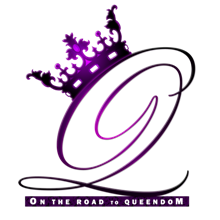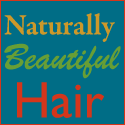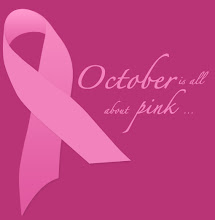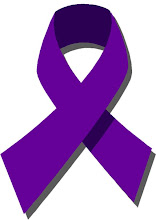Thursday, December 31, 2009
CONDITIONER SEARCH...
As salaamu alaikum & Hello ladies,
Well it's that time again. Time for some new conditioner's. I am looking for a good leave-in conditioner as well as a good Deep conditioner.
I am in need of a few suggestions. I am looking for both over the counter ( to buy locally) and purchase over internet. Either, one is fine. So, if any of you ladies have any suggestions. Please share them with us here at " AuNaturale". Can't wait to here from you . Take care ( smiles)
Posted by Unknown at 1:30 PM 6 comments
Labels: conditioner search
Sunday, December 27, 2009
HOMEMADE HOTOIL TREATMENTS...
Do you cry about un-lively dry strands of hair after every wash by expensive chemical products? Well! Then bid them good bye and try these natural homemade hot oil treatment to add extra care for your hair that promises shine, health and extra bounce. Discover the natural world of homemade hair care products. They are simple to make and it takes only few minutes to apply.
Rosemary Hot Oil Treatment
Ingredients: 1/2 cup of dried rosemary leaves & 1/2 cup soybean oil
Directions: Combine ingredients and heat until warm. Strain the ingredients through a fine strainer or cheesecloth to remove all of the access leaves. Coat the entire head and hair with the mixture, working it through evenly to the end of the strands. Then wrap the hair in plastic and later in a warm towel. For best results leave the oil mixture on hair for 15 minutes or longer. Wash your hair with mild shampoo until oil is completely removed.
Curry Leaves Hot oil Treatment
Ingredients : Coconut oil & 2 strands of curry leaves
Directions: Combine the ingredients and heat it until warm. After the oil has cooled to normal temperature crush the leaves and use a strainer to remove all the access leaves. Apply it as described above. It works well for dry and discoloured hair.
Ginger Hot Oil Treatment
Ingredients: Ginger root
1 teaspoon sesame oil
1 teaspoon lemon juice
Directions: Squeeze ginger root to obtain one tablespoon of juice. Mix all ingredients. Apply to scalp and let dry before shampooing. For best results repeat three times a week.
Jojoba Hot Oil Treatment
Ingredients : Bottle of pure Olive Oil or Jojoba Oil & Bottle of favorite mild shampoo or conditioner
Directions: Bring pan of water to a rolling boil and remove from heat. Place glass bottle containing pure olive oil in pan. Leave it for five minutes. While olive oil is heating; gently shampoo tresses and towel dry. Try to remove all excess moisture from strands before applying olive oil. Apply olive oil directly onto hair strands from root to ends avoiding the scalp area. Cover hair with plastic cap and sit under heated dryer or conditioning cap for 10-15 minutes. Rinse hair with warm water. Later shampoo and to remove extra oil to complete your homemade hot oil treatment.
Soybean Hot Oil Treatment
Ingredients: 1/2 cup soybean oil
8 drops oil of sandalwood
8 drops oil of lavender
8 drops oil geranium
Directions: Mix all the ingredients and warm the oil to a comfortable temperature. Apply the mixture to damp hair. Wrap hair in plastic wrap and apply a hot towel for 20 minutes. Shampoo your hair and rinse well.
ENJOY!!!
Posted by Unknown at 8:11 AM 4 comments
Labels: homemade hotoil treatments
Wednesday, December 23, 2009
CALENDULA FOR YOUR HAIR & SKIN...
Commonly known as "pot marigold," calendula is an exceptionally versatile herb native to the Mediterranean. For centuries, it has actively been grown in gardens to use as food and for its healing properties. Identified by its bright orange and yellow petals which hold medicinal properties, it should not be confused with the garden variety marigold.
The name calendula is derived from the plant's tendency to bloom according to the calendar, either once a month or with the new moon. This annual flourishes in cool, temperate climates and grows to a height of 9-20 inches.
The flavenoids present in the calendula flower and its inherent anti-inflammatory, astringent, antifungal, and antiseptic properties result in an ideal topical agent. It can be applied to the skin to treat boils, rashes, sunburn, chafed skin, insect bites, and other skin irritations. The properties of calendula make it an attractive herb for treating and soothing the scalp.
Calendula is usually found as dried flowers or essential oil. It can be used to create tinctures, ointments, lotions, infused oils, and body butters to name a few. When mixed with oils like olive oil, the effects of calendula are enhanced. Products containing calendula are readily available at health food stores and online - or create your own using one of these recipes!
Pack a glass jar with dried calendula flowersCover packed flowers with olive oilCover with a tight lidStore the jar in a dark cupboard and shake well every day for two weeksAfter two weeks, strain oil into a clean glass jar or bottleAdd Vitamin E oil as a natural preservativeApply directly to the skin, scalp, or hair Test the oil on a small area to test for allergic reactions 6 ounces calendula infused oil (above)2 ounces sweet almond oil3 ounces shea butter2 ounces cocoa butterMix ingredients in a small pot on very low heatOnce the ingredients have melted, simmer for 20 minutes while stirring regularlyCarefully pour into plastic or glass jars and allow to solidifyApply directly to the skin, scalp, or hair Store in the refrigerator to lengthen the shelf life.
Increase or decrease ingredients for the desired consistency 6 ounces calendula infused oil (above)2 ounces jojoba oil10-15 drops of rosemary essential oil10-15 drops tea tree essential oil10-15 drops sage essential oilMix ingredients together in a spouted applicator bottleShake well prior to useApply directly to the scalp. Use this oil on the scalp to sooth conditions and combat dandruff.
Enjoy!!!
Posted by Unknown at 7:19 PM 0 comments
Tuesday, December 22, 2009
MORE ON HAIR CONDTIONING...
There many factors influencing the way our hair looks, among them regular taking care of our hair and conditioning. Hairs are considered to be skin appendages, as well as nails, sebaceous and sweat glands. A grown up man has got approximately 5 million hairs altogether. There are about 100 000 hairs of the scalp and their thickness goes from 40 to 800 per cm2. There are different types of hair, i.e.: lanugo, or downy hair, and the hair of a grown up person.
How is our hair built?
The hair root of an individual hair forms a tiny but long tunnel (called a follicle) which reaches into the lower layers of the skin. The hair is divided into a shaft: the portion growing above the skin and the hair roots anchored in inside the follicle. At the end of the tiny tunnel, there is a hair papilla. The papilla is the centre of growth for the hair; it is where nutrients are taken up from the blood. Another part of the hair is its hair bulb which contains pigments. The content of the tubular hair determines its colour. The surface of the tubular structure is scale-like, covered with tiny plates. Each hair has got three layers: interior, cortical and hair shell.
Melanocyte, a pigment-producing cell in the hair determines their colour. The pigment that melanocytes make is called melanin. The major determinant of colour is not the number but rather the activity of the melanocytes. Melanin production takes place in unique organelles (tiny structures within the cell) known as melanosomes. Darkly pigmented skin, hair and eyes have melanosomes that contain more melananin.
The hair is built in a tubular way and consists primarily of a substance called keratin. This is scleroproteid with the variety of amino acids which form polypeptide chains. In keratin there are such amino acids as: arginine, cystine, glycine, tyrosine, fenyloalanine, lysine, and other amino acids.
How does the hair grow?
Hair does not contain nerves or blood, but instead is rooted in living skin, which is how a uniform structure is formed.
Hair does not grow continuously. There are three phases of hair life. The transitory phase which lasts approximately 2 to 4 weeks, and a hair turns loose from the papilla and moves slowly upward in the hair follicle. During the resting phase, which lasts from 2 to 4 months, hair has reached the sebaceous gland and is ready to fall out, thus making room for his successor. The growth phase is the phase during which hair sits firmly in the hair papilla and, dependent upon genetic factors, matures during its 2 to 7 years of growth, becoming longer and longer. The majority of hair on a healthy grown up person’s scalp is in the growth phase while only 10% of hair is in the resting phase.
On the scalp 85% of hair should be in the growth phase.
The lifespan of hair on a head may vary from four to even twenty five years. The hair may be 2 meters long then. This hair is also the quickest growing hair of a human body. The hair grows 0.35mm a day on average. The phase of growth of a man’s beard lasts approximately 40 weeks. The cycle of eyelashes’ growth varies from 3 to 5 months. For babies, in their first half a year of life, the resting phase of hair cycle is much longer than for adults. Downy hairs are only a few centimetres long before they start falling out, which is quite normal. The physiological norm for the hair loss of an average person is about 100 hairs per twenty-four hours. If we lose more, this may be a sign of some malfunctioning of our body. The state of hair is important in diagnosis of many diseases.
What can influence the condition of our hair?
There are numerous important factors which influence the state of our hair, its thickness, the right growth, as well as its physiological composition and biochemical.
Nourishing elements
These are very important.
The way a person’s hair looks provides strong evidence on his malnutrition or/and under nourishment. It has been proved that after two weeks of following a non-protein diet, there are signs of disappearing of hair bulbs and thinning of the hair follicles.
Amino acids- are necessary to make the proper hair growth possible. While doing some experiments on animals, it has been proved that the most dangerous is the deficiency of cystine. In turn, the deficiency of metionin causes dryness and brittleness of hair. The deficiency of tryptophan causes alopecia, while the deficiency of cystein makes the hair lose the gloss.
Carbohydrates - give hair the proper amount of energy which is important for hair metabolism. It is because hair in follicles is one of the fastest growing parts of human body.
Vitamins - Hair is very sensitive to the deficits of all vitamins but in particular to the deficiency of Vitamin A. Avitaminosis / hypovitaminosis A may cause particular ocular and dermal changes. The most important ocular changes are: the night blindness and changes of cornea. As for the dermal changes we may find one called hyperkeratosis. The hair of a sick person becomes weak, dry and brittle.
Microelements- The deficiency of microelements has got a great impact on the hair growth. The most important microelements are: zinc, iron and copper.
The deficiency of zinc may cause, among many others symptoms, hyperkeratosis of skin and hair loss. The 24-hour requirement for zinc is 2mg. This element is very difficult to assimilate. This means that only 1/6 part of zinc brought with food gets assimilated by our body. Zinc also is easily extracted with faeces, urine and sweat. Therefore even if the amount of zinc (10-15mg) in our diet is sufficient in the majority of cases, sometimes there are cases of deficiency of this element in our country.
The deficiency of copper may lead to some structural changes and discolouration. Pathological changes in hairs in so-called Menkes complex, which is genetically conditioned defect of transportation of copper in the alimentary tract, are good examples of such changes.
The deficiency of iron may cause the alopecia. The example of such a state is sideropenia, which causes an extensive alopecia of women.
In many cases microelements get inside hair through the blood, firstly into its bulb and then into its root and further. Arsenic and selenium are examples of such microelements. Other elements can also get inside hair through the keratin, for example lead. Lead remains mainly on the outer parts of hair, though. Intoxication with lead, arsenic and selenium may also cause alopecia.
Hormonal agents
They have very a strong impact on hair growth. The example of such may be the activity of testosterone, one of the androgenic hormones. Androgens stimulate the growth of hair but the head whereas on the scalp, androgens remain responsible for the male type of alopecia. Alopecia is genetically conditioned. When a man reaches his sexual maturity, testosterone causes thinning of hair on his head in specific places. Hair bulb starts disappearing.
Stress
It has got an enormous effect on the way our hair look. It may cause the extensiveness of hair loss and development of alopecia.
Natural adornment
Hair protects from the destructive thermal factors and UVA/UVB. However, its active role is not very important, which is quite the reverse to the psychosocial importance of hair in human life. It is because hair is the natural adornment of man. Its appearance has got a huge impact not only on our general feeling but also on our relations with other people.
We need to remember that taking care of our hair by using chemical preparation, we should also provide our body with appropriate nutrition and balanced diet because this is the best way we can take care of our health.
If our hair tends to fall out, the reasons for this should be traced in the dysfunction of inner organs, e.g. any kind of hormonal disorder or food deficiency. In some cases, after consulting a doctor first, we can use special vitamin or microelement preparation as a supplement of our diet.
It is very important to notice that examining our hair, in many cases may help us to put the diagnosis about the general health condition of our body.
Examining of hair
Owing to different scientific methods we are able to find out the degree of hair loss, as well as to check the hair shaft under the electron or light microscope and to examine the state of a hair root, which enables to calculate the percentage of hair growth, involution and rest phases.
Absorptive spectrophotometry defines the amount of microelements (e.g. Mg, Zn, Fe) in human hair which allows to discover the deficiency of metals necessary for the hair growth and defines the level of the body poisoning, for instance by lead. WHO and International Agency for the Protection of Environment have chosen human hair as a distinctive element to evaluate the influence of toxic substances on living organisms.
Posted by Unknown at 11:55 AM 0 comments
Labels: conditioners
Thursday, December 17, 2009
AVOCADO OIL FOR HOT OIL HAIR TREATMENT...
Using avocado oil for hot-oil hair treatments is a good way to nourish your hair, repair split ends, and add shine. Avocado oil is available at some mainstream grocery stores, natural food stores, and online.
Pricing
Avocado oil is one of the most expensive cooking oils, in some cases costing as much as $10 for 8 ounces as of December 2009. However, purchasing a bottle is worth the investment. As of December 2009, pre-made hot-oil treatments cost between $1 and $2 for a small tube, and usually aren't made with avocado oil.
Addressing Scalp Problems
Hot-oil treatments help decrease dandruff and scales associated with eczema and psoriasis. The oil loosens the flakes and helps to remove them more easily than brushing alone. One hot-oil treatment a week is usually all that is needed.
Don't Neglect the Extras
For added benefits, combine avocado oil with another oil such as olive oil or vitamin E oil and several drops of one or more essential oils to add fragrance. Tea tree oil is great for scalp problems such as dandruff, and lavender essential oil can soothe redness and irritation.
How to Use
Mix the avocado oil and other essential oils you plan to use in a plastic bag. Place the bag in a cup of hot water for one minute to warm. Massage the hot oil into your scalp and leave it on for five to10 minutes.
Warning
Make sure you wash your hair thoroughly following a hot-oil treatment. Remaining residue will weigh your hair down and make it difficult to style. Sometimes it might be necessary to wash your hair twice to remove all residue.
Tell me , what kinds of oils do you ladies use on your hair for hot oil treatments ?. Share with us here at AuNaturale. Until next time, take care and Enjoy!!!
Posted by Unknown at 2:51 PM 4 comments
Labels: hot oil treatments
Friday, December 11, 2009
10 HONEST THINGS ABOUT MYSELF...
As salaamu alaikum & Hello ladies,
I have been tagged by the beautiful and inspiring Chocolate Orchid. Below I have posted the rules to recieve this great reward :
1. Post the award on your blog.
2. Present this award to others whose blogs you find brilliant in content and/or design, or those who have encouraged you.
3. Tell those people they've been awarded HONEST SCRAP, inform them of these guidelines.
4. Share "Ten Honest things" about yourself.
SO HERE IT IS, 10 HONEST THINGS ABOUT ME
1. I am a very spiritual person, who loves serving her lord.
2. I would love to live in another country and study abroad. (perferably a Islaamic country)
3. I really love being married and being a mother.
4. I hate the site of band aids, yes band aids ( not sure why, but it is serious), lol
5. I love, love a cleaaan house and it must smell good.
6. I really enjoy cooking, love it, love it, love it.
7. I love meeting new people.
8. I am really not a fan of working out , BUT I try (lol)
9. I really enjoy learning, and reading books.
10. I am seriously afraid of heights.
YOU'VE BEEN TAGGED:
1. Slipsitches
2. The Afrolicsious Dynasty
3. Natural Hair...Natural Products
ENJOY!!!
Posted by Unknown at 3:19 PM 4 comments
Labels: 10 honest things about me
Friday, December 4, 2009
ENOUGH IS ENOUGH: THESE BLACK FEMALE EXECS ARE PROUD OF NATURAL HAIR...
As salaamu alaikum & Hello ladies, I read this article and found it quite interesting. Below I've posted the article. Tell me what you ladies think ?.
Black women's hairstyles--and the debate over natural hair versus straightened hair--are a hot topic again after a Glamour magazine staffer sparked a firestorm of controversy with her public comments about Afros.
The staffer, who was presenting the "rules" of female corporate attire to a group of New York women lawyers that included black women, said Afros were an improper corporate hairstyle. DiversityInc decided to ask two successful black-female executives who wear their hair in natural styles about the issue.
"We seem to be the only women who ... are always required to change the naturalness of who we are because of what other people think of us," says Marcia Brown, vice provost, student affairs and community outreach for Rutgers University, Newark.
There's a standard in society that says women who are presentable at minimum and beautiful at maximum are women whose hair blows and hangs ... It's a European standard," adds Brown, who since the 1960s has worn her hair both natural and straight and currently wears her hair in locks, which are commonly called dreadlocks.
To straighten curly hair or not is a continuous question for black women in particular and women of color in general. DiversityInc covered this topic in its March 2006 issue with the article "To Perm or Not to Perm." Because white executives are the majority population throughout corporate America, standards of dress and acceptable hairstyles have mirrored white styles. That there are so few senior-executive black women who wear their hair in an Afro or other natural hairstyle is telling of the problem.
The issue exploded on the Internet again after the Glamour magazine staffer made the presentation at New York law firm Cleary Gottlieb Steen & Hamilton (CGSH). Since then, Glamour's editor-in-chief and CGSH's managing partner have issued apologies, plus the staffer resigned. CGSH's Women's Working Group, which includes a few black-female lawyers, organized a lunch in June and invited the unnamed Glamour staffer to give a presentation on women's corporate attire. The first slide in the presentation featured a black-female executive wearing an Afro, to which the Glamour staffer reportedly said Afros were a "Glamour Don't." She added, "Those political hairstyles really have to go."
Melissa Theodore, 27, currently wears her hair in braids. She has an older sister who is a corporate lawyer and straightened her Afro when she interviewed. After being hired, she wore her hair in braids, too.
I personally never had concerns," says Theodore, who is a staff accountant, international tax services at Ernst & Young .
But while Theodore did not have concerns, her family did. She was warned by her parents and sister that wearing an Afro or braids might hurt more than help her prospects in corporate America.
"You see [Afros and other natural hairstyles], but probably not as often as relaxed hair," says Theodore about black-female executive hairstyles.
She adds that the only political statement made by an Afro is one of individuality
Some [black] women wear their hair natural because they want to be close to their roots and closer to how God made them," says Theodore. "I don't think anyone should concern themselves with it at all. In the workplace, the job you do is [most important]."
Brown adds that rather than considering the black-woman executive who wears an Afro "political," white senior executives should consider that black executive an independent thinker. She says those women are proud and not afraid to speak up and contribute honestly because they are not second-guessing whether their views are being filtered.
I wear my hair in locks because it's my natural hair and it makes a statement that I am anti any standard but my own on what is beautiful," says Brown.
For people who dismiss the societal prejudice that motivates black women to straighten their hair as irrelevant, Brown says consider famous black women in entertainment. Few if any wear their hair in a natural state, including U.S. Secretary of State Condoleezza Rice. Brown points out that she can't remember an "Oprah Winfrey Show" featuring natural hairstyles on makeover shows that included black women. Even the television show "Girl Friends," which airs on the CW network, doesn't include a black woman with naturally curly hair. Black women do not have an equivalent to Michael Jordan, who made it fashionable for black men to shave their heads.
If women like Oprah and women who have the mantle can't show the broad range of black women's hairstyles, that's where the problem is ... the statement is that if you're a dark woman with nappy hair, you can't be a woman in the board room, running the company, or someone considered good-looking," says Brown.
Brown, who is also a lawyer, did straighten her curly hair while working for a telecom company. But "there was a stark change in how people reacted to me when I changed it to locks." She felt the stares.
"[Black hairstyles that are natural] should not force you to be placed in a position where you are not considered worthy or considered not beautiful," says Brown. "When it denies opportunity, it's time to say, 'Enough is enough.
Share with us here at "AuNaturale " what are your feelings on this subject ?. Until next time , Enjoy and take care (smile).
Posted by Unknown at 12:50 PM 9 comments
Labels: proud of natural hair
























